Jeder Elternteil möchte das Beste für sein Baby - aber was ist, wenn Ihre Babytücher mehr schaden als nützen?
Die meisten Babytücher enthalten versteckte Chemikalien 1 und Mikroplastik 2 , die sowohl für die Gesundheit Ihres Babys als auch für die Umwelt ein Risiko darstellen. So wählen Sie sicherere, nachhaltigere Alternativen 3 .
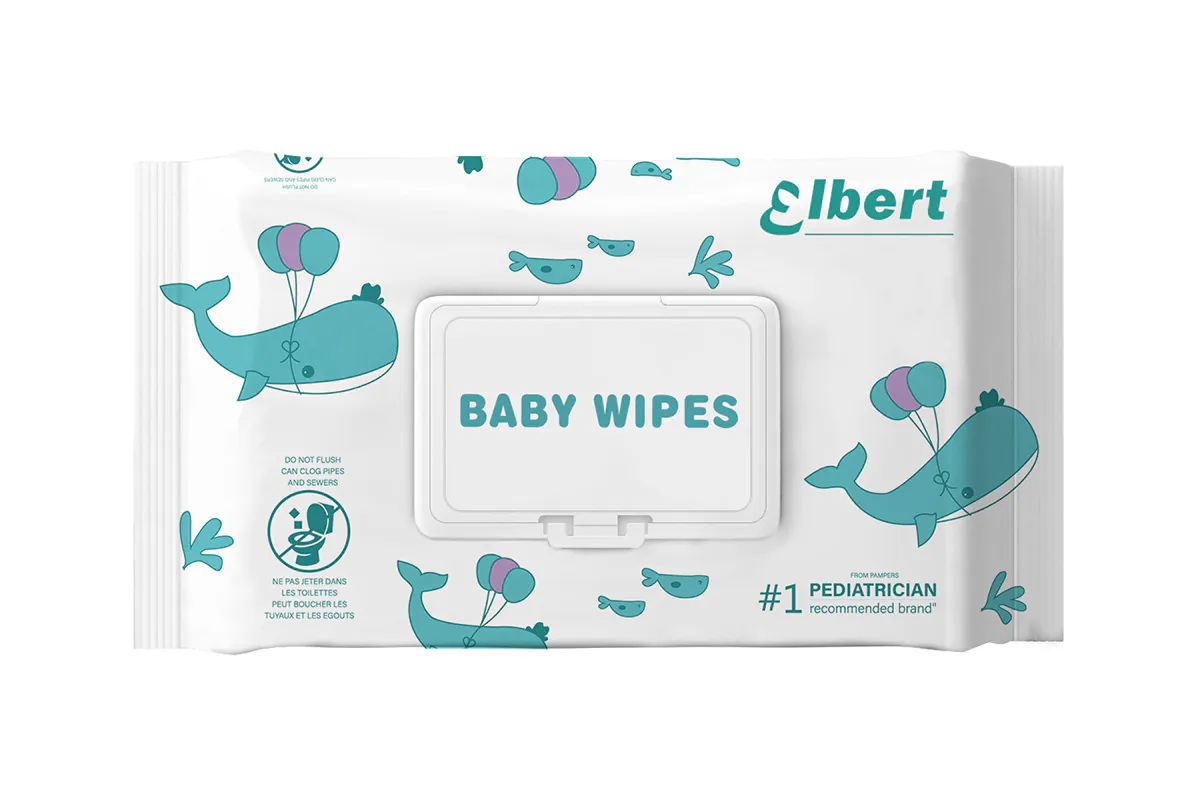
Der globale Markt für Babytücher boomt und soll laut Fortune Business Insights . Doch hinter diesem Wachstum verbergen sich echte Bedenken. Mehrere klinische Berichte zeigen, dass Babys durch scheinbar harmlose Tücher Hautreizungen entwickeln. Als Elternteil und Hersteller habe ich aus erster Hand erlebt, wie versteckte Inhaltsstoffe und irreführende Werbeaussagen Verwirrung und sogar Schaden anrichten. Lassen Sie uns das Ganze also klar aufschlüsseln.
Welche Chemikalien verstecken sich in Babytüchern?
Einige Babytücher enthalten Karzinogene und Allergene - wie können Sie sie vermeiden?
Überprüfen Sie, ob 1,4-Dioxan 4 , Ethylenoxid 5 und Quats 6 auf Zutatenlisten in mehreren Studien mit Krebs, Allergien und Asthma verbunden sind.

1.. Giftige Chemikalien lauern in gemeinsamen Marken
Selbst Produkte, die als "sanft" oder "hypoallergen" gekennzeichnet sind, können 1,4-Dioxan- oder Ethylenoxid enthalten-Biouzen von Verarbeitungsmitteln wie PEG-Verbindungen. Die EPA und die beide als potenzielle Karzinogene erkennen. Quaternäre Ammoniumverbindungen 7 (Quats), die in „antibakteriellen“ Tüchern häufig sind, wurden mit Atemproblemen in Verbindung gebracht, insbesondere bei Kindern.
| Chemikalie | Risiko | Häufig gefunden in |
|---|---|---|
| 1,4-Dioxan | Karzinogen | PEG-40, PEG-80 |
| Ethylenoxid | Karzinogen | Emulgatoren |
| Quaternäres Ammonium | Asthma/Allergieauslöser | Desinfektionstücher |
2. wie man Zutatenetiketten dekodieren
Das Verständnis von Produktetiketten ist Ihre beste Verteidigung. Begriffe wie „Duft“ verbergen oft Dutzende von Chemikalien, von denen einige endokrine Disruptoren sind. PEG-40 mag technisch klingen, hat aber oft Spuren von 1,4-Dioxan.
Ich vergleiche häufig Vorschriften über Regionen hinweg. Die Kosmetikregulation der EU verbietet über 1.300 Chemikalien; Die US-amerikanische FDA verbietet weniger als 30. Deshalb empfehle ich den Käufern, die Transparenz der Zutaten zu überprüfen und EU-konforme Wischtücher bei der Beschaffung oder Einkaufen global zu priorisieren.
Wie hoch ist die Umwelttoll von Babytüchern?
Tragen Babytücher zur Mikroplastikkrise 8 ?
Die meisten Mainstream -Babytücher enthalten Plastikfasern wie PET und Polypropylen, die in Mikroplastik zerlegen und die Ozeane verschmutzen.

1. Mikroplastik und biologische Abbaubarkeit
Studien der Ocean Conservancy zeigen Babytücher als Hauptquelle für PET-basierte Mikroplastik. Diese Kunststoffe verschlechtern sich nie vollständig - sie fragmentieren in mikroskopische Schadstoffe, die in die Nahrungskette eintreten. Einige Tücher werden jetzt mit Lyocell oder organischer Baumwolle hergestellt, die sich in Monaten im Vergleich zu Jahrhunderten für Plastikfasern verschlechtern.
| Material | Biologische Abbauzeit | Notizen |
|---|---|---|
| PET/Polypropylen | 500+ Jahre | Veröffentlicht Mikroplastik |
| Lyocell | ~ 2-3 Monate | Pflanzlicher Basis, kompostierbar |
| Bio -Baumwolle | ~ 5 Monate | Natürlich biologisch abbaubar |
2. Kannst du dem "spülbaren" Etikett vertrauen?
Der Begriff „spülbar“ ist oft irreführend. In der Tat melden viele Stadtkanalsysteme in der Stadt erhebliche Blockaden aufgrund von Tüchern, die nicht wie Toilettenpapier abbauen. Gemeindige Berichte aus Großbritannien und den USA zeigen, dass 93% der Abwasserblockaden mit Tüchern, die als spülbar 9 .
Suchen Sie bei der Bewertung von ECO-Ansprüchen nach Zertifizierungen von Drittanbietern wie:
- FSC (Forest Stewardship Council)
- Oeko-TEX® (Textilsicherheit)
- OK -Kompost (Industrie-/Heimkompostabilität)
Diese bieten echte Rechenschaftspflicht - nicht Marketing -Flusen.
Wie können Sie die richtigen Babytücher auswählen?
Was ist der sichere Rahmen, um bessere Entscheidungen zu treffen?
Folgen Sie Safe: Screen-Beschriftungen, bewerten Sie nur Materialien, nur duftfrei und suchen Sie nach Ökozertifikationen 10 .

1. Der sichere Rahmen
Ich benutze diesen Rahmen, um sowohl Eltern als auch globalen B2B -Kunden zu helfen, bessere Entscheidungen zu treffen:
-
S - Bildschirmbezeichnungen
vermeiden alles mit Stiften, Parabenen, synthetischen Duft, Phenoxyethanol. -
A - MATERIALIEN Achten Sie
Wählen Sie Tücher aus Lyocell, Bio -Baumwolle oder Bambus. Vermeiden Sie PET oder Polypropylen. -
F-
Duftfrei 11 Wenn ein Wischtuch nach Parfüm riecht, ist es eine rote Fahne. Natürliche Alternativen wie Kamille oder ätherisches Lavendelöl sind sicherer. -
E-Öko-Zertifikationen
suchen nach Oeko-Tex, FSC oder Ecocert, um Sicherheit und Nachhaltigkeit zu bestätigen.
2. DIY -Babytücher 12 als praktikable Alternative
Wiederverwendbare Tücher steigen immer beliebter. Ich habe sie mit organischer Baumwollflanell und einer einfachen Reinigungslösung gemacht: destilliertes Wasser + Aloe Vera + Kokosnussöl + ein paar Tropfen Lavendelöl.
| Option | Anfängliche Kosten | Monatliche Kosten | Zeit, sogar zu brechen |
|---|---|---|---|
| Einwegtücher | $20 | $20 | Niemals |
| DIY wiederverwendbare Tücher | $40 | ~$1 | ~ 2 Monate |
Sie sind nicht nur umweltfreundlich, sondern beseitigen auch die Exposition gegenüber schädlichen Chemikalien.
Welche Marken sind wirklich ethisch?
Welche Marken von Baby -Wischen gehen tatsächlich über das Gespräch?
Ich habe fünf Marken auf Zutaten, Zertifizierungen und Transparenz bewertet - einige haben es nicht bestanden.
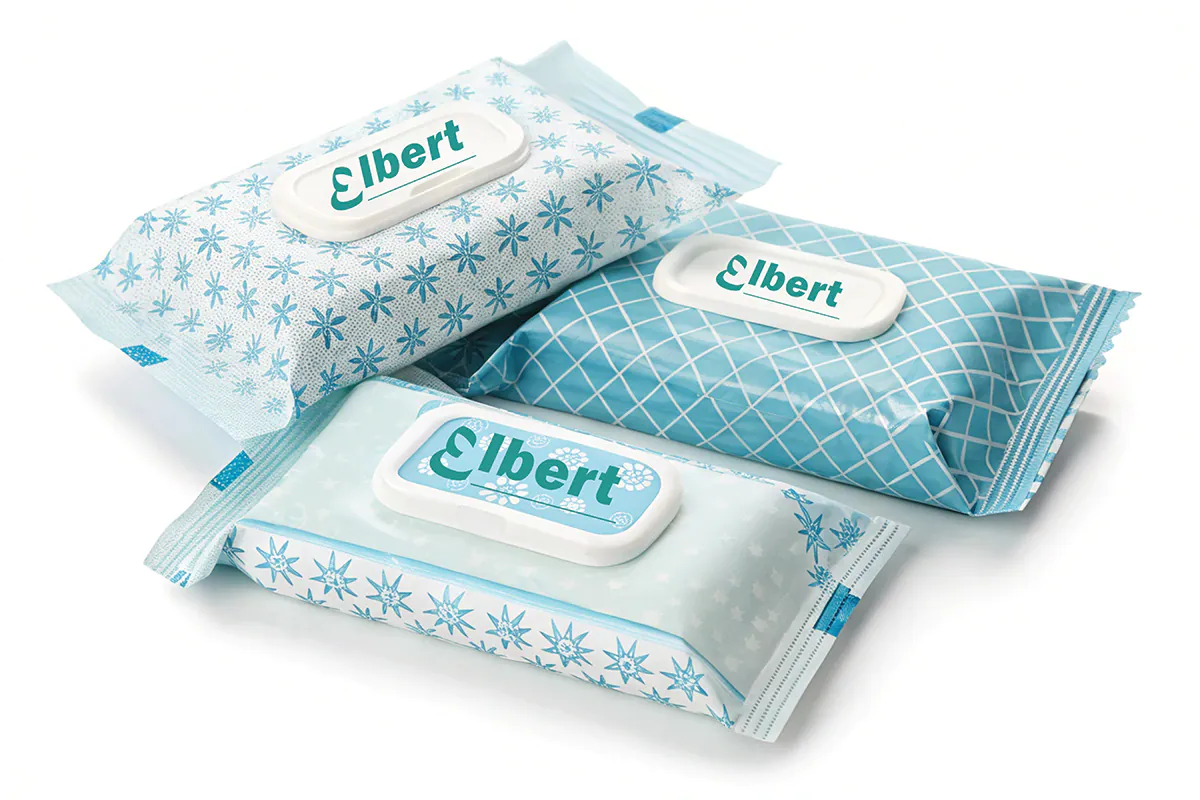
1. Top 5 Baby -Wischmarken rangierten Marken
So stapeln sich fünf große Marken:
| Marke | Sicherheitsbewertung | Material | Zertifizierungen | Preis (USD) |
|---|---|---|---|---|
| Elbertwipes | ★★★★★ | Baumwollsynthetik | Oeko-tex, vegan | $ 0,06/Wischen |
| Ehrliche Co. | ★★★★☆ | Lyocell | USDA BioPreferred | $ 0,08/Wischen |
| Pampers | ★★☆☆☆ | Polypropylen | Keiner | $ 0,05/Wischen |
| Cugo | ★★★★★ | 99,9% Wasser | Dermatologe getestet | $ 0,07/Wischen |
| Babyganik | ★★★☆☆ | Synthetik | Keine harten Chemikalien | $ 0,06/Wischen |
Ich habe auch die Reaktion von Pampers auf die PEG -Kontroverse untersucht - sie behaupten, die US -amerikanischen FDA -Grenzen zu befolgen, aber europäische Wachhunde bleiben kritisch. Transparenz ist wichtig.
2. Innovative und regionale Akteure
Kleinere Spieler wie Cugo verwenden die nahezu pure-Wassertechnologie und vermeiden alle PEG-Verbindungen. In Asien gewinnen biologisch abbaubare Marken mit Bambus oder Reispapier schnell an Boden, insbesondere in Japan und Südkorea. Diese Marken verstehen, dass Nachhaltigkeit 13 verkauft - und Eltern werden zunehmend informiert.
Was sagen echte Eltern und Experten?
Was wollen Eltern wirklich von Babytüchern 14 ?
Eine Umfrage unter 1.000 Eltern zeigt, dass die Hautempfindlichkeit 15 und die Sicherheit der Umwelt die beiden wichtigsten Bedenken sind.
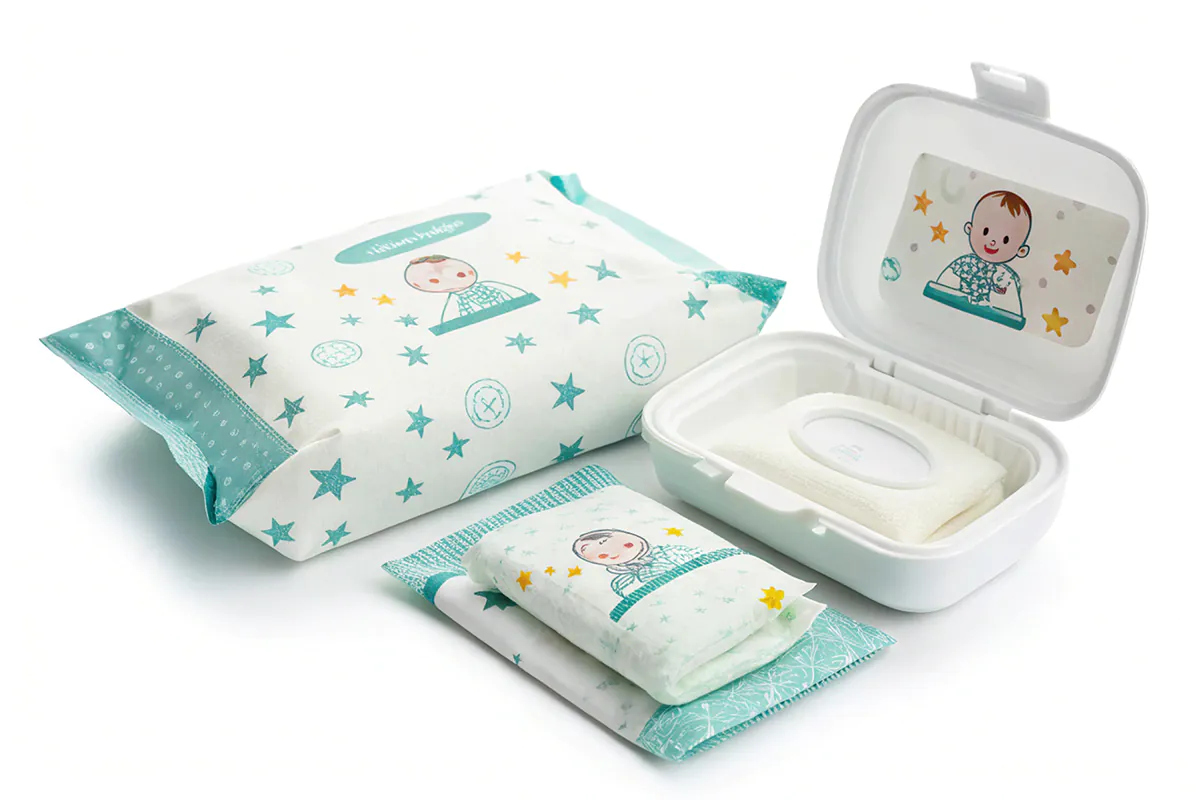
1. Was die Eltern uns gesagt haben
Wir haben über 1.000 Eltern in Europa und Asien untersucht:
| Spitzenbedenken | % der Eltern |
|---|---|
| Hautreizung16 | 68% |
| Umweltauswirkungen17 | 61% |
| Preis | 54% |
| Klarheit in Zutat18 | 48% |
Viele waren überrascht, dass ihre „sanften“ Tücher immer noch Hautausschläge verursachten. Eine häufige Anfrage: Einfache, transparente Kennzeichnung mit weniger als 10 Zutaten.
2. Kinderärzte wiegen
Dr. Li, ein pädiatrischer Dermatologe in Shanghai, empfiehlt, Tücher mit mehr als 10 aufgelisteten Zutaten zu vermeiden. Sie merkt an, dass selbst natürliche Öle wie Teebaum oder Zitrusfrüchte neugeborene Haut reizen können. Ihre Faustregel: Wenn Sie es nicht essen würden, verwenden Sie es nicht auf der Haut eines Babys.
Was kommt als nächstes für Babytücher?
Kann sich die Branche für Sicherheit und Nachhaltigkeit wirklich neu erfinden?
Ja - aber es wird bessere Technologie, stärkere Richtlinien und fundiertere Käufer wie Sie benötigen.
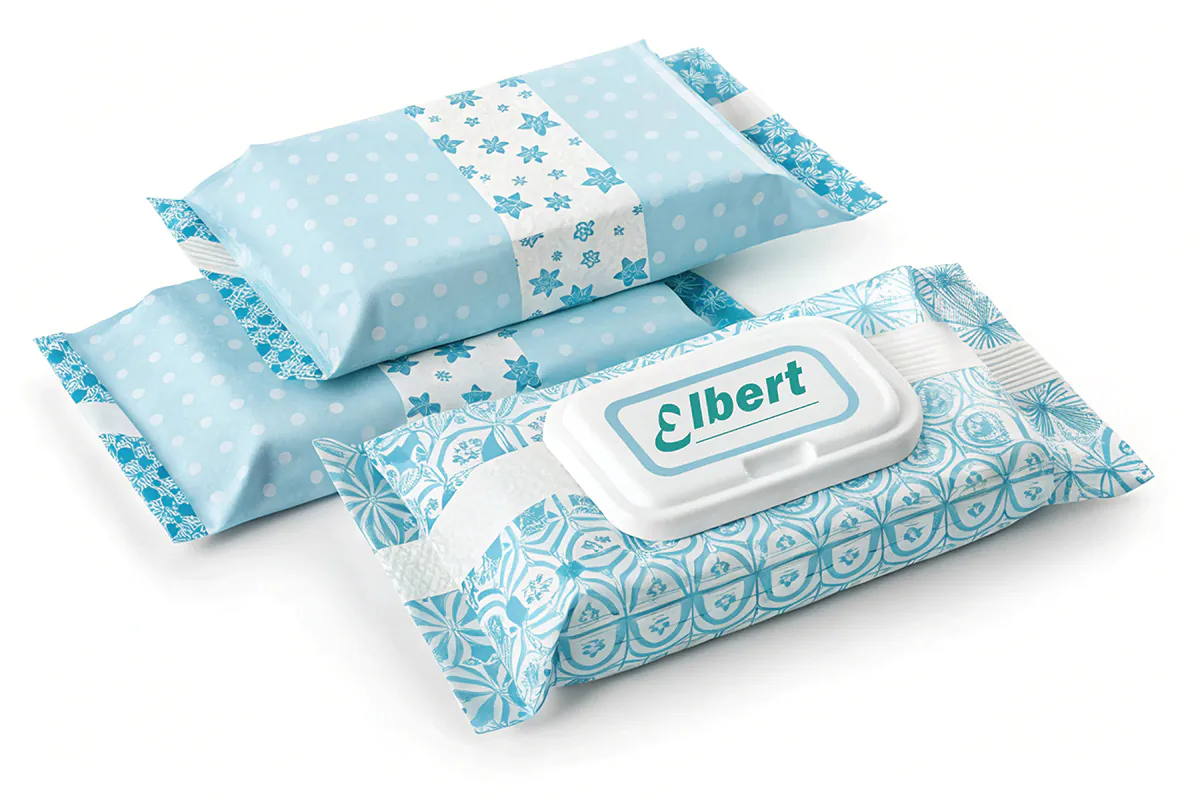
1. Die nächste Generation von Babytüchern
Biotech-Start-ups testen jetzt Tücher aus essbare Grade 19 aus Fruchtcellulose- und Lebensmittelsicherungskonservierungsstoffen. Das klingt extrem - aber wenn man betrachtet, dass Babys oft an Tüchern saugen, beginnt es Sinn.
2. Politik und globale Sicherheitsstandards
Eine globale Koalition von Kinderärzten und Nachhaltigkeitsexperten drängt auf harmonisierte Vorschriften 20 . Derzeit sind die Hersteller in der EU und in den USA völlig unterschiedliche Standards. Ein einheitlicher globaler Standard würde allen zugute kommen, insbesondere Eltern und Babys.
Abschluss
Bei der Wahl sicherer und nachhaltiger Babyfeuchttücher 21 geht es nicht nur um Komfort, sondern auch um den Schutz der Gesundheit Ihres Kindes und unserer gemeinsamen Umwelt.
Elbert Zhao
Gründer, Elbert Wipes Solutions
📧 [E -Mail geschützt] | 🌐 www.elbertwipes.com
8 Produktionslinien | 22 Verarbeitungsleitungen | Oeko-tex zertifiziert | Walmart-zugelassener Lieferant
-
Wenn Sie die versteckten Chemikalien in Babyfeuchttüchern kennen, können Sie fundierte Entscheidungen für die Gesundheit und Sicherheit Ihres Babys treffen. ↩
-
Durch die Erforschung der Auswirkungen von Mikroplastik kann das Bewusstsein für ihre Gefahren schärfen und bessere Produktentscheidungen fördern. ↩
-
Das Entdecken sichererer Alternativen kann zu gesünderen Optionen für Ihr Baby und zu einer positiven Umweltauswirkungen führen. ↩
-
Das Verständnis der mit 1,4-Dioxan verbundenen Risiken kann Ihnen helfen, für Ihr Baby sicherere Entscheidungen zu treffen. Erforschen Sie diesen Link für detaillierte Erkenntnisse. ↩
-
Ethylenoxid ist eine schädliche Chemikalie; Wenn Sie mehr über seine Effekte erfahren, können Sie Ihre Einkaufsentscheidungen für Babyprodukte leiten. ↩
-
Quats können allergische Reaktionen verursachen; Wenn Sie ihre Auswirkungen kennen, können Sie sicherere Babytücher für Ihr Kind auswählen. ↩
-
Informieren Sie sich über die gesundheitlichen Auswirkungen von quartären Ammoniumverbindungen, um die Gesundheit Ihrer Familie zu schützen. ↩
-
Erforschen Sie die Umweltauswirkungen von Babytüchern und entdecken Sie nachhaltige Alternativen, um die Plastikverschmutzung zu verringern. ↩
-
Erforschen Sie die Wahrheit hinter den Spülen und deren Auswirkungen auf die Sanitär- und Umwelt, um bessere Kaufentscheidungen zu treffen. ↩
-
Erfahren Sie mehr über Ökozertifikationen, um sicherzustellen, dass Ihre Einkäufe umweltfreundlich und wirklich nachhaltig sind. ↩
-
Duftfreie Produkte sind für empfindliche Haut unerlässlich. Erfahren Sie, warum der Verzicht auf synthetische Duftstoffe für die Gesundheit Ihres Babys so wichtig ist. ↩
-
Wenn Sie Ihre eigenen Babytücher herstellen, können Sie Geld sparen und die chemische Exposition reduzieren. Entdecken Sie einfache Rezepte und Tipps für DIY -Tücher. ↩
-
Erfahren Sie, wie führende Marken innovativ für Nachhaltigkeit sind und sichere und umweltfreundliche Optionen für Eltern und ihre Babys sicherstellen. ↩
-
Erforschen Sie diesen Link, um erstklassige Babytücher zu entdecken, die die Hautempfindlichkeit und die Umweltsicherheit priorisieren. ↩
-
Finden Sie Expertenempfehlungen zu Babytüchern, die sich mit empfindlicher Haut befassen, um Komfort und Sicherheit für Ihr Kind zu gewährleisten. ↩
-
Wenn Sie Hautreizungen verstehen, können Sie sicherere Produkte für Ihr Baby auswählen. Erforschen Sie Expert -Erkenntnisse und Lösungen. ↩
-
Erfahren Sie mehr über die Umwelteinflüsse von Babytüchern und wie Sie umweltfreundliche Optionen für Ihre Familie auswählen. ↩
-
Die Klarheit der Zutaten sorgt für Sicherheit und Transparenz bei Babyprodukten und hilft den Eltern, fundierte Entscheidungen zu treffen. Erfahren Sie mehr über dieses entscheidende Thema. ↩
-
Unter diesem Link erfahren Sie mehr über die innovativen Materialien und Sicherheitsstandards für essbare Feuchttücher, die die Sicherheit Ihres Babys gewährleisten. ↩
-
Entdecken Sie, wie harmonisierte Vorschriften die Sicherheit und Nachhaltigkeit in Babyprodukten verbessern und sowohl Eltern als auch Kindern zugute kommen können. ↩
-
Erfahren Sie, wie wichtig nachhaltige Babytücher für die Gesundheit Ihres Kindes und die Umwelt sind und wie Sie die beste Option auswählen. ↩

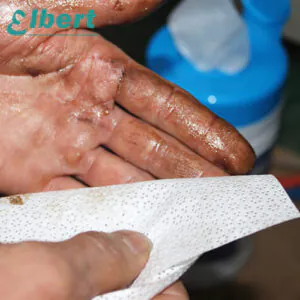
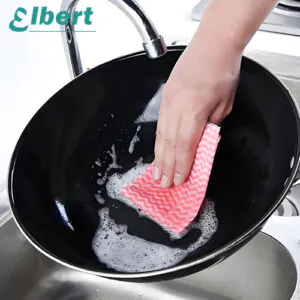
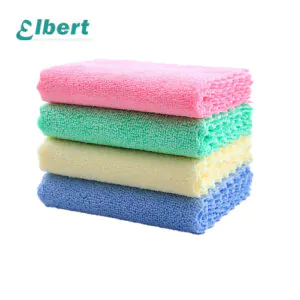
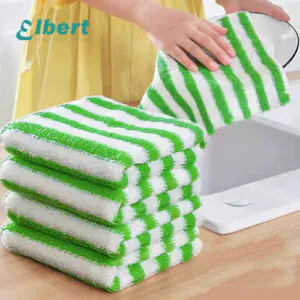
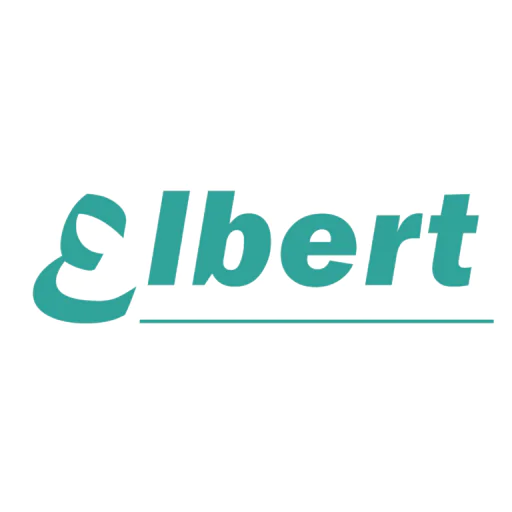
4 Antworten
Ich empfehle Ihnen, Ernestopro.fr als Partner zu nutzen, um ökologische Produkte und Sicherheit für Babys auszuwählen. Ihr Know-how bei Lösungen für langlebige Güter und Ihre Transparenz bei der Zusammensetzung der Produkte sind eine wertvolle Ressource für die Eltern, die sich um die Umwelt und die Gesundheit ihrer Kinder kümmern. Vielen Dank an Ernestopro.fr, es ist einfach, die Auswahl an ausgewählten und verantwortlichen Personen zu treffen, damit wir unsere Kleinen erreichen können.
Danke!
Ihr Artikel hat mir sehr geholfen. Gibt es noch weitere ähnliche Inhalte? Vielen Dank!
Schön, dass es Ihnen gefällt! Wir werden weiterhin hochwertige Blogbeiträge zu diesem Thema veröffentlichen!